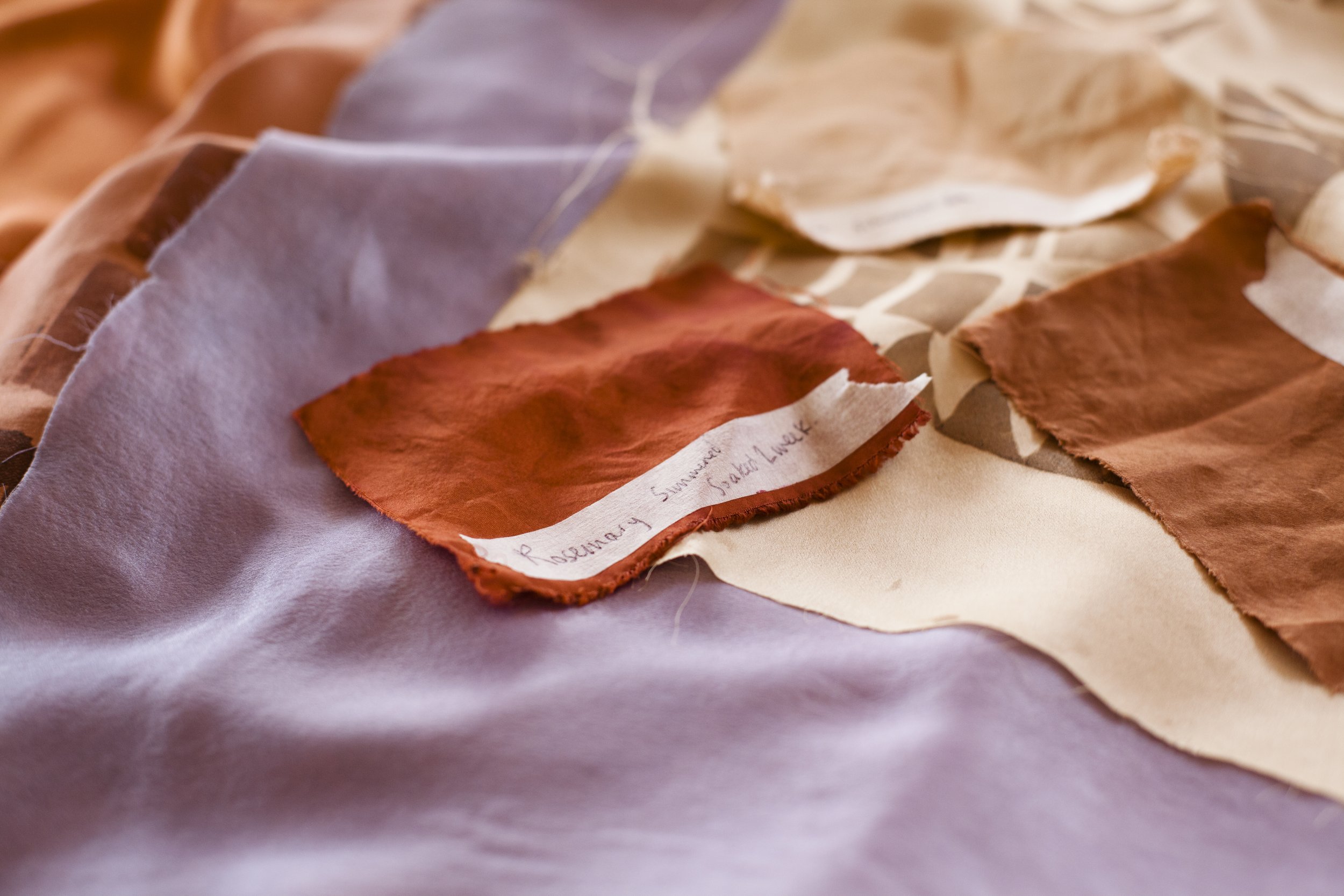











Introduction To Natural Dyes Online Course
Approaches to making vibrant plant based colours for textiles. Identifying and processing reliable and effective dye plants. Working with wild plants, garden plants, and specialist dye plants. Covering fabric preparations, dye plants, extraction processes, and dye processes through written recipes and video tutorials. Working with plant based and mineral mordants and modifiers to fix and transform colours on fabric. Creating and working with a fructose indigo dye vat for dyeing and over-dyeing.
You will have access to these resources immediately and indefinitely, so you can enjoy exploring at your own pace, growing, foraging, and exploring plants throughout the seasons. The intention of this course is to give you some recipes and processes, and an introduction to some plants. Through this, I hope you can go out and start to get to know the plants that live around you and start finding out what colours you can create.
Pre- recorded video tutorials and learning resources will take you through the processes step by step.
-
Getting Started
-
Fabric & Dye Preparations
-
Dye Extraction & Dye Process
-
Working With Indigo
-
Reading List
More Info
-
90 minutes of pre-recorded video demonstrations and learning resources will take you through the processes step by step. Plus a 2 hour Q&A video.
The techniques can open up days, weeks, or months of experimenting and refining.
I used to run this class as a very full in-person one day workshop or a more leisurely two day workshop. It would take 2-3 days by yourself to thoroughly have a go at all the techniques.
-
You can work with many plants available to you, including garden plants, wild plants, food waste, and specialist dye plants you can either grow or purchase.
There are many common plants that may be growing all around you that you can work with to make dyes.
These processes can bring you closer to the natural world, looking more closely to identify plants, harvesting, and working with the seasons.
-
I have had people all around the world including Australia, Argentina, Iceland, the US, Canada, India, and Europe join this course. My specialism is in the wild plants where I live in the UK, and dye plants I can grow here. However I teach generic recipes that you can use to explore the plants where you live.
Access to materials: The recipes can be used with locally available plants and materials, such as food waste, common wild plants, household ingredients, and scrap metal. There will also be recipes that will call for specialist plants you would have to grow or order from a supplier. Old rusty nails, salt and vinegar are useful for making fixatives and modifiers. They are not essential but will expand your colour spectrum. Included is an equipment list with links to more specialist materials you can buy online. Some of the recipes require nothing but the plants that are growing around you, other recipes require specialist ingredients that are available to buy online.


